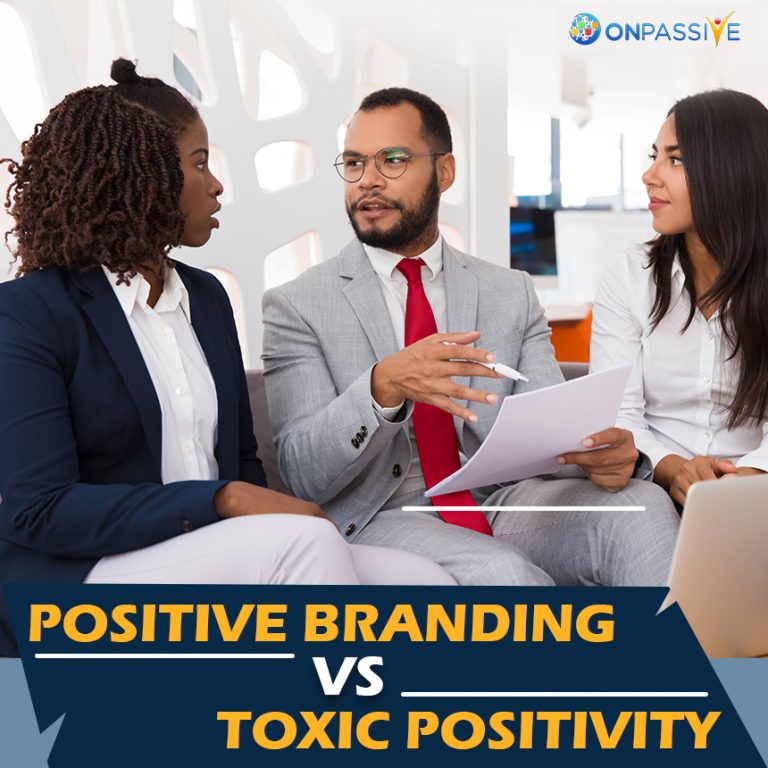
Establishing a healthy relationship is the first step in the creation of profitable and stable customer relationships. The rapport shows mutual interest, and there is trust in the relationship. Although several techniques can be implemented in the relationship-building process, providing toxic positivity in customer interactions will weaken the confidence and essential foundations.
The first-ever response in individual businesses may be to send out uplifting advertisements to combat adverse facts. Yet marketers need to be aware that they lead to Toxic Positivity. Even if customers are looking for comfort, unnecessarily optimistic marketing can be detrimental, ignoring the world’s pain.
What is Toxic Positivity?
Toxic positivity is the creation of a positive-only outlook. Sure, there is strength in optimistic thought. Yet, it’s often naive to assume that if people think just positively and stop becoming pessimistic, they won’t encounter anger or – worst still – have the opportunity to feel upset and convey the feeling appropriately.
How is Positive Branding Different from Toxic Positivity?
Positive branding usually stimulates warm feelings and responses among customers by optimistic thoughts and sentiments. The organization delivering high-quality products or even outstanding customer service may be attributed to good advertising because it also goes beyond operations itself. Positive branding may include the organization’s general opinion on political problems, opportunities for sourcing, or social causes.
Toxic positivity is where an organization creates highly constructive and hopeful advertising to such an extent that it minimizes the actual human experience and is not necessarily idealistic.
How Can Brands Avoid Toxic Positivity to Encourage Positive Branding?
#1 Stop Hiding Negative Feelings
If you’re the one who’s suffering, try not to ignore the destructive emotions further. Feeling depressed, irritated, sad, and angry when faced with struggles is normal. Avoid toxic positivity. Painful emotions are a natural part of our lives. Looking for a balance between positive and negative feelings is what matters the most in positive branding. The easiest way to ensure positive branding is to work on into the bad feelings and find a way to deal with them, so you’re not going to end up in a much worse situation.
#2 Working on Cognitive Thinking Errors
We all have negative thoughts that occur once in a while, and especially if you are depressed, anxious, or stressed, we can all make these errors, leading to increased toxic positivity. One of the most straightforward approaches to addressing your cognitive thinking mistakes to ensure positive branding is to begin by appreciating the little good things in your life to make things easier to get through your most challenging struggles. You’ll be forced to come across something you can do to change the situation. Take your confidence to look at your troubleshooting choices to implement positive branding effectively.
#3 Identify the Organization’s Values
Values should be the organization’s pillar, not hidden away anywhere in a folder somewhere to avoid toxic positivity. If you’re serious about preventing toxic positivity, then it’s time to put your values first. There can be more than just a list of a document’s feel-good words. The costs should be the community under which the company lives, breathes, and works together. Especially in today’s environment where society is desperate for consistency and reliability, positive branding can help a brand make or break its image.
#4 Let Your Personality Lead
Now it isn’t the ideal time either to be formal or professional. Vulnerability provides power. Let the customers know the uncertainty and evolving times affecting you and the organization. Be honest on what you stand for, and prove how much the business succeeds amid the chaos. When you humanize your brand, positive branding becomes less-complicated and more genuine. It’s much more critical for the clients to connect and empathize.
#5 Build a Virtual Community
Finally, take to social media and start interacting effectively. Communicate through your values with your clients, employees, customers, collaborators, and your community. It is a culture of yours. In challenging moments, even though we’re emotionally distancing, we’re drawn to the thought of getting together. Building up the online network and positive branding will only boost the optimistic identity and support the whole team and emotionally bring everyone together.
In a world characterized by confusion, there is no denial of the value of positive branding. But you can identify obstacles by determining who you are and what you believe in, and better consider the pain points of your customers to ensure successful, positive branding.
Winding-Up
By adopting a few positive branding strategies and the team, and as you begin your path into a challenging year, your organization will benefit from this approach and achieve success. The lesson here is to stop considering how the consumer feels and to show empathy.
Step into your customer’s shoes and believe what it is like at the moment to be them and think accordingly — without attempting to oppose the way they feel at the moment. Accept and Allow. You never know when someone else’s going to try to do the same for you.



Ravindra Kumar Teotia
4 years ago
Keith Lynch
4 years ago
Lynnea Palomino
4 years ago
Patricio Rivers
4 years ago
Bruce Nelkin LMT, LMBT
4 years ago
Megan Nadine Finn
4 years ago
Steve Dundore
4 years ago
nobert paul
4 years ago
Dheerendra singh Rawat
4 years ago
Julia Egerszegi
4 years ago
Steve
4 years ago